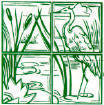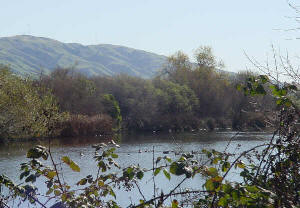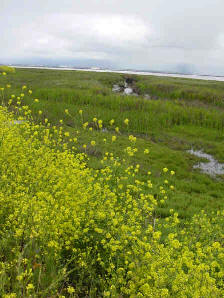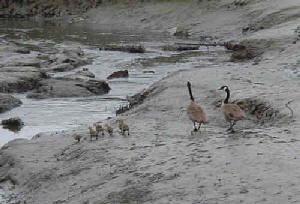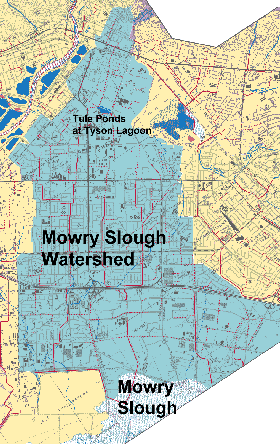WHAT ARE WETLANDS Wetlands can be various sizes and shapes, with either freshwater, brackish water, or marine water for a portion or an entire year. Marshy, boggy, or swampy areas also qualify as wetlands.
There are three indicators of wetlands that include the presence of water, soil development under aquatic conditions, and the presence of wetland plants. Water can be caused by run-off or ground water and is available during the growing season. Types of soil associated with wetlands are called hydric soil. Hydric soil is saturated with water that makes them anaerobic. Decomposition is slow so plant remains can accumulate in areas where water movement is minimal. However in areas where there is continuous movement, soils may be dominated by silt and clay. Plants that are adapted to water are called hydrophytes. There are two types including plants that can be submerged (submergents) such as floating plants and emergents like cattails or tules.
Wetlands are important for biological life because it sustains a diversity of organisms throughout the year. Wetlands provide rest stops for migrating animals like birds. Wetlands also filter and clean storm water from pollutants. Different wetlands fill different functions in an ecosystem. Tyson Lagoon is a permanent, freshwater wetland, whereas the other areas that contain water only during the rainy season are considered seasonal wetlands. Wetlands are usually found in lowlands or spring areas of a watershed. A watershed or drainage basin refers to a system controlled by topography, which defines how water will flow. You refer to a watershed by the largest body of water that the creeks, rivers or streams feed into. For example, all creeks that flow in the San Francisco Bay are part of the San Francisco Watershed.
However, there are many smaller watersheds within this area depending on flow patterns. Tyson Lagoon is part of the Mowry Slough Watershed, which is a small watershed from the foothills of the Diablo range to the San Francisco Bay. Mowry Slough starts at the end of Mowry Ave and winds from Alameda County Public Works Flood Control land and meanders toward the Don Edwards San Francisco Bay national Wildlife Refuge. Mowry is one of the larger sloughs in the San Francisco Bay and considered the primary pupping site for harbor seals in the south bay. Watersheds naturally clean themselves as water can be filtered as it flows through wetlands. Water that migrates through the different levels of the watershed nourishes biological life. However, we sometimes pollute these wetlands by discharging industrial or municipal waste into the watershed (point source pollution). This overloads the system and pollution of toxic substances may increases. Even small amounts of pollution (non point pollution) can accumulate and cause significant damage. Our watersheds reflect the health of our environment.
Wetlands were once destroyed because they were perceived as worthless land and their ecological value was not understood. Half of the wetland acreage existing in 1770 in the contiguous United States had been destroyed by 1970. Although there are restrictions on the filling of wetlands throughout the United States, pollutants from surrounding areas threatens the health of some wetlands. Runoff from paved surfaces including streets, sidewalks, driveways, parking lots and roofs;, as well as unpaved areas such as over-watered lawns and gardens and construction sites, is carried by street gutters into storm drains. The storm drain system in the vicinity of Tyson Lagoon discharges untreated runoff into Pond A. Runoff contains eroded sediment, chemicals (i.e. fertilizers, herbicides and pesticides), automotive oil and grease, paint particles, soaps, garbage, pet waste, and heavy metals (i.e. copper, lead and zinc).
Some pollutants in water runoff that are toxic to
humans, may be taken up by aquatic plants, bacteria, and protozoa as
part of their normal photosynthetic or respiration processes. Heavy
metals bind to clay particles that are common components of soils in
this area, and sink to the bottom of the pond. The Tule Ponds at Tyson
Lagoon Wetland Center is a natural system that cleans water. Attempts
like these are human’s way of trying to restore what we have destroyed.
|
